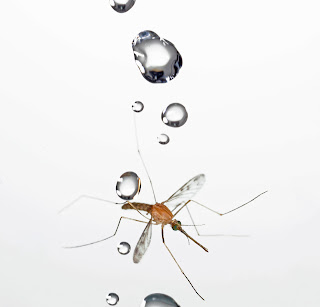Good news for aspiring jelly-bean jar estimators who are under 30! Your intuitive grasp of numbers may not have peaked yet. Unlike other cognitive skills, the ability to approximate keeps improving well into adulthood. Since the skill is tied to mathematical smarts, this news might bring hope to struggling students.
Scientists call our intuitive understanding of numbers the approximate number system, or ANS. It lets us compare amounts or guess at the size of a solution without putting our thinking into words. An approximate number system has been observed in adults, kids, infants, remote Amazonians who don't have number words, chimpanzees, and pigeons.
Just because you have an approximate number system, though, doesn't mean it measures up to everyone else's. For English-speaking humans with internet access, an easy way to test your ANS is with a simple computer test. Available at panamath.org, the test flashes sets of dots and asks whether you see more yellow ones or more blue. Afterward, if you dare, you can find out how your skill compares to that of other people who have taken the test (though not pigeons, sadly).
A whole lot of people, in fact, have taken this test. When researchers led by Justin Halberda at Johns Hopkins University posted a version at www.testmybrain.org, a site where you can participate in ongoing psychology experiments, they got over 10,000 responses in just 3 months. This giant dataset became a new paper in Proceedings of the National Academy of Sciences.
Before taking the test, participants had filled out a questionnaire that included items such as their age (subjects ranged from 11 to 85) and how they felt they did in various school subjects compared to their peers. From this heap of information, two patterns emerged.
The first was that subjects' approximation skill was tied to their self-reported math ability. People who answered the dot questions faster and more accurately said that they were (or had been) good at math, compared to their classmates. This held true across all ages, from kids currently in school to retirees who hadn't seen a math class in 60 years.
Of course, people can misremember how well they did in school. But when the researchers asked a smaller group of subjects about their SATs, the math scores corresponded to self-reported math ability. And while the math SAT score also correlated to performance on the number sense test, verbal SAT scores didn't. This suggests the better ANS scores are truly related to math ability, not to overall intelligence or a tendency to inflate one's resumé.
The second finding was that number sense changes over a person's lifetime—and it peaks late. The accuracy of people's answers on the test steadily improved up until age 30 or so, before beginning a long decline. (As for speed, teenagers answered the fastest, even though they were less accurate than adults.)
Although the trends were clear across the 10,000 subjects, people within in each age group varied widely in their number sense scores. For example, the authors write, one out of eight adults in their study had a less precise number sense than the average 11-year-old. Since these scores seem to be linked to math performance in school, this variation might help explain why certain students sail through class while others struggle. But Justin Halberda says the results are a cause for optimism.
Halberda adds, "I remain hopeful that we will be able to improve people's abilities even later in life." In other words, you might never be too old to return to your second-grade classroom and dominate a round of Guess How Many Pennies.
Halberda J, Ly R, Wilmer JB, Naiman DQ, & Germine L (2012). Number sense across the lifespan as revealed by a massive Internet-based sample. Proceedings of the National Academy of Sciences of the United States of America PMID: 22733748
Images: Philip Chapman-Bell/Flickr; Jay Rishel/Flickr
Halberda J, Ly R, Wilmer JB, Naiman DQ, & Germine L (2012). Number sense across the lifespan as revealed by a massive Internet-based sample. Proceedings of the National Academy of Sciences of the United States of America PMID: 22733748
Images: Philip Chapman-Bell/Flickr; Jay Rishel/Flickr




















.jpg)















